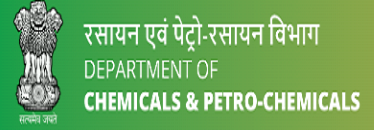Fundamental Provisions
The fundamental obligations of States Parties to the Convention are set out in its very first article. Each State Party undertakes never under any circumstances:
- To develop, produce, otherwise acquire, stockpile or retain chemical weapons, or transfer, directly or indirectly, chemical weapons to anyone;
- To use chemical weapons;
- To engage in any military preparations to use chemical weapons;
- To assist, encourage or induce, in any way, anyone to engage in any activity prohibited to a State Party under this Convention. (Article 1, paragraph 1).
Each State Party undertakes to destroy all chemical weapons and all chemical weapons production facilities that it owns or possesses or that are located in any place under its jurisdiction and control, as well as to destroy all chemical weapons that it abandoned on the territory of another State Party. Finally, each State Party undertakes not to use riot control agents as a method of warfare.
The fundamental obligations set out in Article I demonstrate the unique multifaceted character of the Convention. Article I contains prohibitions on use and preparations for use, the requirement for States Parties to disarm, and a non-proliferation element.
The all-encompassing obligations in Article I are not, however, meant to dampen the use of, or to restrict trade in chemicals between States Parties. Indeed, the Preamble to the Convention clearly enunciates the view of the States Parties that "achievements in the field of chemistry should be used exclusively for the benefit of mankind" and their desire to promote free trade in chemicals as well as international cooperation and exchange of scientific and technical information in the field of chemical activities for purposes not prohibited under this Convention in order to enhance the economic and technological development of all States Parties.
In sum, the obligations of States Parties under the Convention are both negative (prohibiting activities relating to chemical weapons) and positive (requiring the destruction of chemical weapons capability and encouraging activities relating to peaceful uses of chemistry).
1. What is a chemical weapon?
The Convention defines the term "chemical weapon" in Article II, paragraph 1, which states that the term "chemical weapons" means together or separately:
- Toxic chemicals and their precursors, except where intended for purposes not prohibited under this Convention, as long as the types and quantities are consistent with such purposes;
- Munitions and devices, specifically designed to cause death or other harm through the toxic properties of those toxic chemicals specified in subparagraph (a), which would be released as a result of employment of such munitions and devices;
- Any equipment specifically designed for use directly in connection with the employment of munitions and devices specified in subparagraph (b).
It is notable that the various items that can be considered to be chemical weapons are defined in terms of the intent with which they were made. Thus "munitions and devices" are considered to be chemical weapons when they are "specifically designed" to cause certain effects. Other "equipment" is also considered to be a chemical weapon when it is "specifically designed" for use with munitions and devices. The definition of "toxic chemicals and their precursors" is perhaps the most interesting, since it combines both the intent aspect (toxic chemicals and their precursors are considered chemical weapons except where intended for purposes not prohibited under the Convention) and an additional objective element (the types and quantities of the chemicals at issue must be consistent with purposes not prohibited under the Convention). The additional objective element serves in this case to protect against abuse of the intent element. Article II, paragraph 9 attempts to add further clarity to the objective element by defining "purposes not prohibited" as meaning:
- Industrial, agricultural, research, medical, pharmaceutical or other peaceful purposes;
- Protective purposes, namely those purposes directly related to protection against toxic chemicals and to protection against chemical weapons;
- Military purposes not connected with the use of chemical weapons and not dependent on the use of the toxic properties of chemicals as a method of warfare;
- Law enforcement including domestic riot control purposes.
"Toxic chemical" is also defined separately as "[a]ny chemical which through its chemical action on life processes can cause death, temporary incapacitation or permanent harm to humans or animals" (Article II, paragraph 2). Since the definition is limited to chemicals that cause harm to humans or animals, herbicides are excluded. It is noteworthy, however, that the Preamble to the Convention specifically recognises the "prohibition, embodied in the pertinent agreements and relevant principles of international law, of the use of herbicides as a method of warfare".
In addition to regulating stockpiles of current chemical weapons, the Convention also covers "old chemical weapons" and "abandoned chemical weapons". Old chemical weapons are defined as those which were produced before 1925, or were produced between 1925 and 1946 and "have deteriorated to such extent that they can no longer be used as chemical weapons" (Article II, paragraph 5). Abandoned chemical weapons are "[c]hemical weapons, including old chemical weapons, abandoned by a State after 1 January 1925 on the territory of another State without the consent of the latter" (Article II, paragraph 6).
2. Scheduled chemicals
The Convention's Annex on Chemicals contains three "Schedules" of chemicals, which have been selected on the basis of their degree of toxicity, history of use in chemical warfare and commercial utility. Facilities related to the chemicals that are listed in these schedules (commonly referred to as "scheduled chemicals") are subject to verification in accordance with the Convention. In addition to the verification of facilities relating to scheduled chemicals, the Convention also contains verification measures for facilities producing unscheduled discrete organic chemicals.
3. Compliance and verification
The OPCW was created for the purpose of implementing the provisions of the Convention on an international level. The Organisation is mandated to conduct international verification activities and work in the field of international cooperation, to deliver assistance and protection against chemical weapons, and to provide a forum for consultation and cooperation among its Member States.
The verification regime is set out in great detail in the Convention. The regime focuses on obtaining relevant facts in order to build confidence among States Parties, and to discover any violations. The CWC requires declarations from States Parties relating to any chemical weapons or related facilities that they have or have had since 1946, as well as with respect to facilities relating to the chemicals listed in the three Schedules to the Convention and to unscheduled discrete organic chemicals. The CWC specifies the threshold amounts above which declarations are required for particular types of chemicals. These declarations are verified through routine inspections of the declared facilities. The Convention also provides procedures for ascertaining relevant facts in cases of suspected non-compliance (including the use of challenge inspections), and for investigations of cases of the alleged use of chemical weapons.
Inspections are carried out by members of the Secretariat's Inspectorate Division. The inspectors, drawn from all regions and holding the citizenship of a State Party, are experts in their field. As international civil servants, their responsibilities are not national but exclusively international, and they regulate their conduct solely with the interests of the Organisation in view, subject to the authority of the Director General.
The results of routine inspections are reported to the Director-General in the form of a final inspection report. If the report contains any uncertainties that cannot be removed through consultation with the inspected State Party, the Convention requires that the Director-General inform the Council of the results of the inspection. In the case of a challenge inspection, the Director-General must always submit the report to the Council and to all States Parties. If the Organisation conducts an investigation of alleged use, the Director-General must submit both the preliminary and final reports of the inspection team to the Council. The Council will then evaluate the information provided in the reports and make recommendations to the Conference on the measures, if any, to be taken.
4. Dispute prevention and settlement
The Convention also contains several mechanisms for dispute prevention and settlement. The primary vehicle for resolving concerns about a State Party's compliance with the Convention is Article IX. In that article, entitled "Consultations, cooperation and fact-finding", it is clear that a State Party is expected to "make every effort to clarify and resolve, through exchange of information and consultations among [States Parties], any matter which may cause doubt about compliance with this Convention, or which gives rise to concerns about a related matter which may be considered ambiguous". A State Party may request clarification from another State Party directly or through the Executive Council which may examine the matter itself or may request the Director-General to establish a group of experts to examine all available information and report its findings. If still unsatisfied, the State Party requesting clarification can request a special session of the Executive Council and/or beyond that, a special session of the Conference. The Conference may consider action under Article XII, including bringing the matter to the attention of the United Nations General Assembly and Security Council. The foregoing steps are without prejudice to each State Party's right under Article IX to request an on-site challenge inspection of any facility or location in the territory of any other State Party for the sole purpose of clarifying and resolving any questions concerning possible non-compliance.
Dispute settlement in general is specifically addressed in Article XIV. The dispute settlement provisions of the CWC are unusual in that they cover not only disputes among States Parties, but also between one or more States Parties and the Organisation. Disputes are to be settled in accordance with the relevant provisions of the Convention and in conformity with the purposes and principles of the United Nations Charter. In particular, Article XIV, paragraph 2, requires settlement of the dispute by negotiation by other peaceful means of the parties' choice, including recourse to the appropriate organs of this Convention and, by mutual consent, referral to the International Court of Justice in conformity with the Statute of the Court.
Under Article XIV, the Council is authorised to contribute to dispute settlement "by whatever means it deems appropriate". The Conference also has a role in the settlement of disputes, which may be brought to its attention by a State Party or by the Council. In such cases the Conference is specifically authorised to establish or entrust organs with "tasks related to the settlement of these disputes". Finally, both the Conference and the Council are "separately empowered, subject to authorization from the General Assembly of the United Nations, to request the International Court of Justice to give an advisory opinion on any legal question arising within the scope of the activities of the Organization".
Before leaving the issue of dispute resolution, it should be noted that the Convention establishes a special body for addressing disputes relating to breaches of confidentiality that involve both a State Party and the Organisation. Paragraph 23 of the Annex on the Protection of Confidential Information (the "Confidentiality Annex") provides that these types of cases will be considered by a "Commission for the settlement of disputes related to confidentiality", which shall be a subsidiary organ of the Conference with members appointed by the Conference.
5. Peaceful uses of chemistry
The Convention specifically states that its provisions, and particularly the verification regime with respect to scheduled chemicals, shall be implemented in a manner which avoids hampering the economic or technological development of States Parties, and international cooperation in the field of chemical activities for purposes not prohibited under this Convention including the international exchange of scientific and technical information and chemicals and equipment for the production, processing or use of chemicals for purposes not prohibited under this Convention. (Article XI, paragraph 1 and Article VI, paragraph 11)
Moreover, the Convention reiterates States Parties' rights with respect to the use of chemicals for purposes not prohibited by the Convention. States Parties are obliged Not [to] maintain among themselves any restrictions, including those in any international agreements, incompatible with the obligations undertaken under this Convention, which would restrict or impede trade and the development and promotion of scientific and technological knowledge in the field of chemistry for industrial, agricultural, research, medical, pharmaceutical or other peaceful purposes. (Article XI, subparagraph 2(c))
In this regard, States Parties have undertaken to review their existing national trade regulations on chemicals "to render them consistent with the object and purpose of this Convention". The exact balance between free trade in chemicals amongst States Parties and the prohibitions of the CWC is still under discussion.
6. National implementation measures
The intrusive nature of the CWC's verification regime, and the fact that it covers private chemical enterprises as well as government facilities, means that national implementation measures are of great importance. The Convention addresses this topic in two principal ways. First, it requires States Parties to enact national legislation that will extend to individuals and companies the prohibition from undertaking any activity prohibited for States Parties by the Convention. Second, it requires each State Party to designate or establish a National Authority "to serve as the national focal point for effective liaison with the Organization and other States Parties."
7. Final provisions
The Convention also contains the normal provisions relating to amendments, duration and withdrawal, status of the annexes, entry into force, reservations, the Depositary and authentic texts.
Two procedures are specified for amending the Convention. First, amendments to the text of the Convention necessitate the calling of a special "Amendment Conference". Any amendment requires a positive vote of a majority of States Parties with no State Party casting a negative vote, and ratification or acceptance by those States Parties who cast a positive vote at the Amendment Conference. (Article XV, paragraph 3) In order to allow the Convention to keep pace with developments in chemistry, a second, more streamlined, procedure is provided for changes to the annexes of "an administrative or technical nature". All changes to the Annex on Chemicals are to be made in accordance with this procedure. The procedure may also be used for administrative or technical changes to most parts of the Verification and Confidentiality Annexes.
The annexes to the Convention are also treated differently with regard to the matter of reservations. Article XXII provides that the "Articles" of the CWC are not subject to reservations, whereas the "Annexes" to the Convention are not subject to reservations that are "incompatible with [the Convention's] object and purpose".
The Convention is of unlimited duration. Each State Party has the right to withdraw if "it decides that extraordinary events, related to the subject-matter of this Convention, have jeopardized the supreme interests of its country" (Article XVI, paragraph 2). In such cases, the State Party is required to provide notice, which must include a statement of such events.














